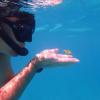Powerful conservation tech tools are gathering more data in the field than ever before. But without equally powerful and effective data management and processing tools, that data - no matter how groundbreaking or interesting - will not be able to reach its full potential for impact.
Data management can sometimes seem intimidating to conservationists, especially those just getting started in the world of conservation tech or experimenting with new data collection methods. While every community member's workflow and preferred data management and processing methods may be different, this group can serve as a resource to explore what works for others, share your own advice, and develop new strategies together.
Below are a few WILDLABS events dealing with datasets collected from various conservation tech tools:
Nicole Flores: How do I get started with Wildlife Insights?
Jamie Macaulay: How do I analyse large acoustic datasets using PAMGuard?
Sarah Davidson: Tools for Bio-logging Data in Conservation
Whatever conservation tech tools you work with, and whatever your preferred data management methods, we hope you'll find something helpful and effective in this group when you become a member!
I am a Senior researcher and PI in Conservation and Animal Ecology at Fondazione Edmund Mach, Trento, Italy. I am coordinator of EUROMAMMALS, member of the advisory board of the Global Initiative on Ungulate Migration at CMS, and President of the International Bio-Logging Society
- 0 Resources
- 0 Discussions
- 5 Groups
Data Science | Remote Sensing | GIS | Geospatial Cloud Computing | Big Data
- 0 Resources
- 0 Discussions
- 4 Groups
Conservation Biologist
- 0 Resources
- 0 Discussions
- 5 Groups
FileMaker developer with a passion for nature.





- 1 Resources
- 67 Discussions
- 7 Groups
Sustainability Manager for CERES Tag LTD. An animal health company; animal monitoring, conservation, & anti-poaching/ rural crime. Wildlife, livestock, equine & companion. #CeresTrace #CeresWild #CeresRanch




- 2 Resources
- 19 Discussions
- 24 Groups
Founder CEO Painted Dog Research trust. Committed to using science to drive conservation decisions, development of students and commu

- 0 Resources
- 13 Discussions
- 2 Groups
I'm a Mechanical Engineer and I have been involved in test and measurement, IT maintenance consulting, database development, field installation, field maintenance, systems analysis, theater composition and an active synthesist. Currently engaged in conservation volunteer work
- 0 Resources
- 0 Discussions
- 7 Groups
- @AnnabelL
- | she/her
- 0 Resources
- 0 Discussions
- 10 Groups
Developer of science data repository RAMADDA
- 0 Resources
- 0 Discussions
- 1 Groups
- @tutgut5
- | she/her
- 0 Resources
- 5 Discussions
- 8 Groups
- 0 Resources
- 3 Discussions
- 11 Groups
Researcher at Forest Research Institute Baden-Wuerttemberg, Passive acoustic monitoring of woodcock
- 0 Resources
- 0 Discussions
- 5 Groups
Are you passionate about wildlife conservation and eager to contribute to meaningful research efforts? Lion Landscapes is seeking a dedicated and proactive Research Assistant to join their team.
11 April 2024
Space for Giants is looking for a Conservation Science Intern to help support the Conservation Science team in managing data flow, storage, and analysis to maximize the efficiency of monitoring and evaluating impact.
9 April 2024
In a recent publication we tested Underwater Passive Acoustic Monitoring (UPAM) as a feasible non-invasive technique to study the calling behavior of therathened aquatic Andean frogs under natural conditions in the...
6 April 2024
Article
You’re invited to the WILDLABS Variety Hour, a monthly event that connects you to conservation tech's most exciting projects, research, and ideas. We can't wait to bring you a whole new season of speakers and...
22 March 2024
SMART Global Congress, the first global gathering of conservation professionals using SMART, was held in Windhoek, Namibia from March 10-13. Here is a snapshot of what we learned!
19 March 2024
Join our multi-national team at the AI for Biodiversity Change Global Climate Center! We're hiring a Research Data Manager & Tech Coordinator at Ohio State. Support cutting-edge research on climate change &...
15 March 2024
Emerging trends for Nature-Based Solutions project assessments
8 March 2024
Catch up on the conservation tech discussions and events that happened during World Wildlife Day 2024!
7 March 2024
Join us to help prevent biodiversity loss! Understory is hiring a postdoc to lead R&D Development on generalizing Computer Vision models for vegetation identification across space/time/phenotypes.
29 February 2024
Is there really a sustainability data deficiency? We don’t think so.
29 February 2024
Careers
The SMART Partnership is hiring a Program Director to oversee all aspects of the partnership's operations
21 February 2024
We invite applications for the third Computer Vision for Ecology (CV4E) workshop, a three-week hands-on intensive course in CV targeted at graduate students, postdocs, early faculty, and junior researchers in Ecology...
12 February 2024
April 2024
event
July 2024
October 2024
March 2024
event
| Description | Activity | Replies | Groups | Updated |
|---|---|---|---|---|
| Hi Matthew,Thanks for your advice, this is really helpful!I'm planning to use it in a seagrass meadow survey for a series of ~20 drops/sites to around 30 m, recording for around... |
|
Acoustics, AI for Conservation, Data management and processing tools, Emerging Tech, Sustainable Fishing Challenges | 1 day 5 hours ago | |
| This is so cool @Mauricio_Akmentins - congrats and look forward to seeing your project evolve! |
|
Acoustics, Biologging, Climate Change, Conservation Tech Training and Education, Data management and processing tools, Emerging Tech, Open Source Solutions, Protected Area Management Tools, Sensors, Software and Mobile Apps | 1 week 1 day ago | |
| First things first, our team, @jcguerra10, @hefca, and myself, is thrilled to share with immense pride... |
|
Build Your Own Data Logger Community, Data management and processing tools, Sensors | 2 weeks 2 days ago | |
| This thread is off-topic in this conversation, so happy to continue it in the other one. However, just noting - your system is one example, but not the only one - there are... |
|
Human-Wildlife Conflict, Data management and processing tools | 3 weeks ago | |
| Thank you Carly, I will definitely take a look. |
|
Acoustics, Biologging, Climate Change, Conservation Tech Training and Education, Data management and processing tools, Remote Sensing & GIS, Software and Mobile Apps | 3 weeks 5 days ago | |
| Hello Friends,Its amazing to see the growing number of organisations working in biodiversity conservation.Biodiversity stories can have a... |
|
Data management and processing tools, Software and Mobile Apps | 1 month ago | |
| Were you ever able to solve the problem? Interestingly enough, I begin a seal bio-logging study next year! Also, you are correct. The errors were occurring during short bout... |
|
Data management and processing tools | 1 month 2 weeks ago | |
| Thank you! This is encouraging. It's also nice to know that Saul is approachable for problem-solving issues. |
|
Data management and processing tools | 2 months 2 weeks ago | |
| Am working on similar AI challenge at the moment. Hoping to translate my workflow to wolves in future if needed. We all are little overstretched but it there is no pressing... |
|
Camera Traps, AI for Conservation, Build Your Own Data Logger Community, Data management and processing tools, Marine Conservation, Protected Area Management Tools, Remote Sensing & GIS | 2 months 2 weeks ago | |
| Hello WILDLABS Community!I work on the development of the hardware for networks of fixed radio receivers that are used to detect... |
|
Data management and processing tools | 2 months 2 weeks ago | |
| Hi!I would take a look at Although developed for camera trap imagery, it is by no means restricted to such.Cheers,Lars |
|
Camera Traps, Community Base, Data management and processing tools, Drones, Emerging Tech, Remote Sensing & GIS, Software and Mobile Apps | 2 months 3 weeks ago | |
| Fire detection is a sort of broad idea. Usually people detect the products of fire, and most often this is smoke.Many home fire detectors in the US use a radioactive source... |
|
Community Base, Conservation Tech Training and Education, Data management and processing tools, Ethics of Conservation Tech, Human-Wildlife Conflict, Open Source Solutions, Protected Area Management Tools, Sensors, Wildlife Crime | 2 months 3 weeks ago |
Drop-deployed HydroMoth
2 April 2024 10:20am
15 April 2024 6:53am
Hi Matthew,
Thanks for your advice, this is really helpful!
I'm planning to use it in a seagrass meadow survey for a series of ~20 drops/sites to around 30 m, recording for around 10 minutes each time, in Cornwall, UK.
At this stage I reckon we won't exceed 30 m, but based on your advice, I think this sounds like not the best setup for the surveys we want to try.
We will try the Aquarian H1a, attached to the Zoom H1e unit, through a PVC case. This is what Aquarian recommended to me when I contacted them too.
Thanks for the advice, to be honest the software component is what I was most interested in when it came to the AudioMoth- is there any other open source software you would recommend for this?
Best wishes,
Sol
Research Assistant, Lion Landscapes in Nanyuki
11 April 2024 9:49am
Applied hierarchical modelling (AHM) for species distribution and abundance
9 April 2024 7:22pm
Conservation Science Intern - Space for Giants, Nanyuki
9 April 2024 8:55am
WILDLABS AWARDS 2024 - Underwater Passive Acoustic Monitoring (UPAM) for threatened Andean water frogs
30 March 2024 3:54pm
2 April 2024 2:35pm
Thanks @carlybatist for your suggestions! In deed we are looking for open code/free access alternatives for automated species recognition
5 April 2024 12:13pm
Congratulations, very exciting! Keep us updated!
7 April 2024 6:09pm
This is so cool @Mauricio_Akmentins - congrats and look forward to seeing your project evolve!
Underwater advertisement call of the threatened Telmatobius rubigo (Anura: Telmatobiidae
6 April 2024 9:56pm
WILDLABS AWARDS 2024 - BoutScout: Monitoring System for Avian Nesting Behavior Studies
31 March 2024 5:57am
SURAKHSYA Portal for Human-Elephant Conflict - any updates?
25 March 2024 11:15am
25 March 2024 11:39am
Ha - you're already in my thread, i've got your project in there, don't worry!
But it's more I don't want proof of concept early R&D type projects that are just destined for a paper or a hobby project, I want to hear about projects that have some plan for usability and scaling so that other people can take and implement them.
25 March 2024 12:17pm
I think that my system is likely the closest thing you will find in terms of production ready and potential to scale as it once was a commercial system with complete over the air updates more than 10 years ago. It’s been in use by many people for more than 10 years and has used AI triggering since 2019. I’m pretty sure no other system can claim that.
So I have the system but you got me on the scalability because to do that you need funding. I don’t have the funding. If I had the funding I’d be doing it full time. But I’ve said enough now. So I’ll leave it at that.
25 March 2024 12:26pm
This thread is off-topic in this conversation, so happy to continue it in the other one. However, just noting - your system is one example, but not the only one - there are certainly other early warning systems in varying stages of development, testing and roll out, and using different levels of technology (ai or otherwise).
The Variety Hour: 2024 Lineup
22 March 2024 4:30pm
Catch up with The Variety Hour: March 2024
21 March 2024 7:39pm
21 March 2024 9:48pm
30 March 2024 3:08pm
31 March 2024 12:43pm
Leveraging Actuarial Skills for Conservation Impact
15 March 2024 12:31pm
19 March 2024 6:35pm
Thank you for your response Akiba. I will have a look. 👏🏻
19 March 2024 7:52pm
I would look into the TNFD (Taskforce on Nature-Related Disclosures), Finance for Biodiversity, Accounting for Nature, etc. which are all focusing on how to incorporate nature risk into corporate reporting and sustainability frameworks!
20 March 2024 3:48pm
Thank you Carly, I will definitely take a look.
SMART Global Congress 2024: A quick summary
19 March 2024 6:42pm
Data Manager and Technology Coordinator, ABC Global Climate Center
15 March 2024 5:01pm
The Freshwater Sounds Archive
15 March 2024 10:32am
Introducing The Freshwater Sounds Archive, a global database of sounds produced by freshwater species.
Submit your species-specific or unidentified sounds to the archive now and receive recognition for your contribution in a forthcoming data paper as a co-author!
movedesign: Shiny R app to evaluate sampling design for animal movement studies
13 March 2024 3:10pm
This "workflow allows users to evaluate a wide range of potential sampling designs, which can then serve as a solid foundation for future tracking projects, or even the evaluation of on-going and published studies."
Biodiversity Informatics Innovations using MindMaps
13 March 2024 6:32am
Navigating corporate due diligence in the Voluntary Carbon Market
8 March 2024 4:36pm
26 March 2024 2:11pm
27 March 2024 10:56am
29 March 2024 9:13am
Here's what you missed at World Wildlife Day 2024
7 March 2024 9:02pm
15 March 2024 2:42pm
Machine Learning Postdoc Position, Understory
29 February 2024 11:56pm
Data data everywhere, but not a byte to use!
29 February 2024 7:13am
Calculating Wingbeat Frequency From Accelerometer Data
19 February 2024 9:07pm
27 February 2024 8:28pm
Great suggestion! Diving bird studies and their analyses are actually what has helped me get thus far with solving this problem. They happen to have done quite the same thing as I'm trying to do, just with more behaviors added. I believe the study was done with murres and kittiwakes.
Best,
Travis
27 February 2024 8:48pm
I'm very close to solving the problem. Just waiting for a function to run on a fairly large dataset to see the results. I will share the repository link with you when it gets accomplished!
The species I'm working with roost atop cave ceiling as also drop from there to get airborne!
Yes, they are triaxial (Technosmart) and body mounted right on their backs.
So far, I have created thresholds for different metrics derived from the accelerometer data. Essentially, I sectioned out a bunch of ACC data where I am positive flight is occurring, and did the exact same with roosting, and crawling around/scratching(activity while roosting). From there, I plotted the distribution of all the metrics to see which metrics have unique distributions that were significantly different than roosting/activity.
Using those distributions, I created thresholds for the important metrics in which all flight behavior was either above or below a certain value for that metric. This got me to being able to construct a decision tree based on these metrics which had pretty solid accuracy.
The downside is a small chunk of flight from the beginning and end of flight bouts are not being included in the behavior classification. I noticed that their wbf during those small chunk are indicative of flight and am going to try and add wbf as the last decision on the tree to improve the accuracy of it.
VeDBA is also being included and calculated and based on the values for the thresholds I have created for flight it should not matter how high their head is, rather how low it is, when x y and z thresholds are also met. If that makes sense.
Hope I answered most of your questions!
27 February 2024 8:59pm
Were you ever able to solve the problem? Interestingly enough, I begin a seal bio-logging study next year!
Also, you are correct. The errors were occurring during short bout flights as well as some spectral leakage, but I may have solved the problem by lower the window size. I've also corrected for the spectral leakage by creating a separate function that identifies any significant changes in calculated WBF that last < 2 seconds, then counts number of heave amplitudes within 1 second. I'm using an fft for the calculations and am just waiting for a function to run on a larger dataset to see if everything came out the way I am hoping for. Fingers crossed.
Best,
Travis
SMART Partnership Director
21 February 2024 4:32pm
Computer Vision for Ecology Workshop 2025 Call for Applications
12 February 2024 9:29pm
Post-doc possition - Field spanning movement ecology, ecology of fear, bio-logging science, behavioral ecology, and ecological statistics
10 February 2024 7:20am
Bio-Logging Science Symposium
9 February 2024 3:59pm
Southern African Wildlife Management Association Conference 2024
6 February 2024 12:20pm
Image analysis with volunteers
26 January 2024 6:30pm
27 January 2024 9:14am
I have a little experience with Timelapse and would say it is definetely worth the invested time.
The developer Saul Greenberg has made a ton of documentation on its use and is also very approachable in person, if you have any issues.
I can only highly recommend it.
27 January 2024 9:01pm
Thank you! This is encouraging. It's also nice to know that Saul is approachable for problem-solving issues.
Jupyter Notebook: Aquatic Computer Vision
25 January 2024 5:50am
26 January 2024 1:46pm
This is quite interesting. Would love to see if we could improve this code using custom models and alternative ways of processing the video stream.
27 January 2024 4:07am
This definitely seems like the community to do it. I was looking at the thread about wolf detection and it seems like people here are no strangers to image classification. A little overwhelming to be quite honest 😂
While it would be incredible to have a powerful model that was capable of auto-classifying everything right away and storing all the detected creatures & correlated sensor data straight into a database - I wonder if in remote cases where power (and therefore cpu bandwidth), data storage, and network connectivity is at a premium if it would be more valuable to just be able to highlight moments of interest for lab analysis later? OR if you do you have cellular connection, you could download just those moments of interest and not hours and hours of footage?
27 January 2024 6:11am
Am working on similar AI challenge at the moment. Hoping to translate my workflow to wolves in future if needed.
We all are little overstretched but it there is no pressing deadlines, it should be possible to explore building efficient model for object detection and looking at suitable hardware for running these model on the edge.
Analysis Methods for Localization with Networks of Fixed Radio Receivers
26 January 2024 2:36pm
Need advice - image management and tagging
12 January 2024 7:55pm
15 January 2024 8:47pm
Interesting, Iʻll give it a shot. Looks like this could save me some time.
Thanks for the explanation @wade!
24 January 2024 5:16pm
I have no familiarity with Lightroom, but the problem you describe seems like a pretty typical data storage and look up issue. This is the kind of problem that many software engineers deal with on a daily bases. In almost every circumstance this class of problem is solved using a database.
In fact, a potentially useful analysis is that the Lightroom database is not providing the feature set you need.
It seems likely that you are not looking for a software development project, and setting up you own DB would certainly require some effort, but if this is a serious issue for your work, you hope to scale your work up, or bring many other participants into your project, it might make sense to have an information system that better fits your needs.
There are many different databases out there optimized for different sorts of things. For this I might suggest taking a look at MongoDB with GridFS for a couple of reasons.
- It looks like you meta data is in JSON format. Many DBs are JSON compatible, but Mongo is JSON native. It is especially good at storing and retrieving JSON data. Its JSON search capabilities are excellent and easy to use. It looks like you could export your data directly from Lightroom into Mongo, so it might be pretty easy actually.
- Mongo with the GridFS package is an excellent repository for arbitrarily large image files.
- It is straightforward to make a Mongo database accessible via a website.
- They are open source (in a manner of speaking) and you can run it for free.
Disclaimer: I used to work for MongoDB. I don't anymore and I have no vested interest at all, but they make a great product that would really crush this whole class of problem.
25 January 2024 8:32am
Hi!
I would take a look at
Although developed for camera trap imagery, it is by no means restricted to such.
Cheers,
Lars






















































5 April 2024 2:04pm
Hi Sol! This seems like an awesome project! I have a few questions in response: Where were you thinking of deploying this payload and for how long?
Regarding hydromoth recorders, there have been several concerns that have popped up in my work with deploying the them at this depth because it's a contact type hydrophone which means it utilizes the case to transmit the sound vibrations of the marine soundscape to the microphone unlike the piezo element based hydrophones.
A side not: for biodiversity assessments, the hydromoth is not characterized and is highly directional, so you wouldn't be able to compare sites through your standard aocustic indices like ACI and SPL.
That said if you are deploying for a short time, a hydrophone like an Aquarian H1a attached through a penetrator of a blue robotics housing that contains a field recorder like a zoom recorder may be optimal for half a day and be relatively cheaper than some of the other options. You could also add another battery pack in parrallel for a longer duration.